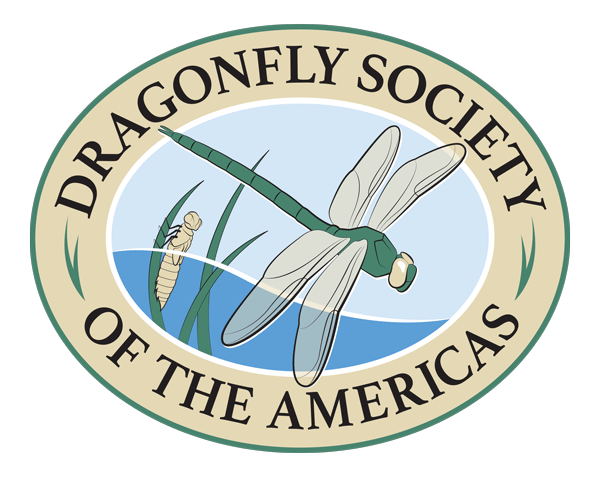August Species of the Month: The Darner Family (Aeshnidae)
This month’s DSA blog focus is on a dragonfly Family: the darners (Aeshnidae). Darners fly continuously or hover intermittently, and hang vertically when perched. They are large dragonflies, ranging in North America from 52 mm to 116mm (approximately 2-5 inches) in length, with big eyes and long abdomens. Darners are widely found around the globe. Read on to discover more about this group through the eyes of Odonata expert Dr. Dennis Paulson, as he hikes the Santa Ana National Wildlife Refuge.
Darner Hunting at the Mexican Border
In my July 2021 blog post for “species of the month,” I cheated and wrote about a small group of species with migration in common. This time I’m doing it again, writing about a group of interest taxonomically, geographically, and ecologically—the darners, Aeshnidae. Because it’s the tropics, I have to emphasize diversity!
Trail in Santa Ana National Wildlife Refuge, Texas; 17 September 2008; Dennis Paulson
Santa Ana National Wildlife Refuge, on the Rio Grande in southern Texas and thus right across from Mexico, is well known to naturalists as a place to go to see tropical plants and animals otherwise rare in the United States. It is a destination for dragonfly enthusiasts, and several tropical odonate species have furnished first records for the USA here. Some of them we now know are fairly common in the Lower Rio Grande Valley.
Male Blue-eyed Darner, Coryphaeschna adnexa; Santa Ana National Wildlife Refuge, Texas; 5 June 2005; Dennis Paulson.
Having spent a lot of time walking tropical forest paths, I have learned to look for darners roosting in the vegetation near the trail. I have not been disappointed at Santa Ana. I visited there in June and November 2005 and September 2008 and found tropical darners on each visit, including those shown in these photos. The Blue-spotted Comet Darner (Anax concolor) was the first record for the US.
Male Blue-spotted Comet Darner, Anax concolor; Santa Ana National Wildlife Refuge, Texas; 5 June 2005; Dennis Paulson.
I walk along the trail slowly, scrutinizing the vegetation on both sides. I am looking for a short vertical line in the midst of a welter of branches and twigs going every which way. That vertical line might just be the abdomen of a darner hanging up. I approach slowly, hoping to get a photo. If flushed, they sometimes fly only a short distance before hanging up, although very commonly they disappear into the forest, never to be found again. So I repeat the exercise time after time.
Male Turquoise-tipped Darner, Rhionaeschna psilus; Santa Ana National Wildlife Refuge, Texas; 17 September 2008; Dennis Paulson.
The dusk fliers (Gynacantha and Triacanthagyna) will be there all day, presumably hanging in the same spot. If I stay until dusk, I will probably see some of them flying around clearings. However, they are, not necessarily easy to identify at that time. The day fliers will be hanging up between bouts of foraging away from or over the forest, and all of the species will probably be breeding in the scattered ponds, where I have found exuviae.
Female Bar-sided Darner, Gynacantha mexicana; Santa Ana National Wildlife Refuge, Texas; 17 September 2008; Dennis Paulson.
In addition, Amazon Darners (Anax amazili) and Icarus Darners (Coryphaeschna apeora), rare species in the US, have also turned up at and near Santa Ana, and Common Green Darners (Anax junius) are often there as well.
Male Caribbean Darner, Triacanthagyna caribbea; Santa Ana National Wildlife Refuge, Texas; 19 September 2008; Dennis Paulson.
June may be an especially good month, as tropical darners are moving around the landscape at the beginning of the rains in Mexico. But I and others have found them there in September, October, November and even April. It’s worth a visit!
Male Pale-legged Darner, Triacanthagyna septima; Santa Ana National Wildlife Refuge, Texas; 17 September 2008; Dennis Paulson.
Our guest blogger for July is Dr. Dennis Paulson. He received a Ph.D. in Zoology from the University of Miami, and taught college and adult-education courses about natural history for more than three decades. Dr. Paulson recently retired after 15 years as the Director of the Slater Museum of Natural History at the University of Puget Sound. He is the author of Dragonflies and Damselflies: A Natural History; Dragonflies and Damselflies of the East; Dragonflies and Damselflies of the West, and many other natural history books and field guides.








